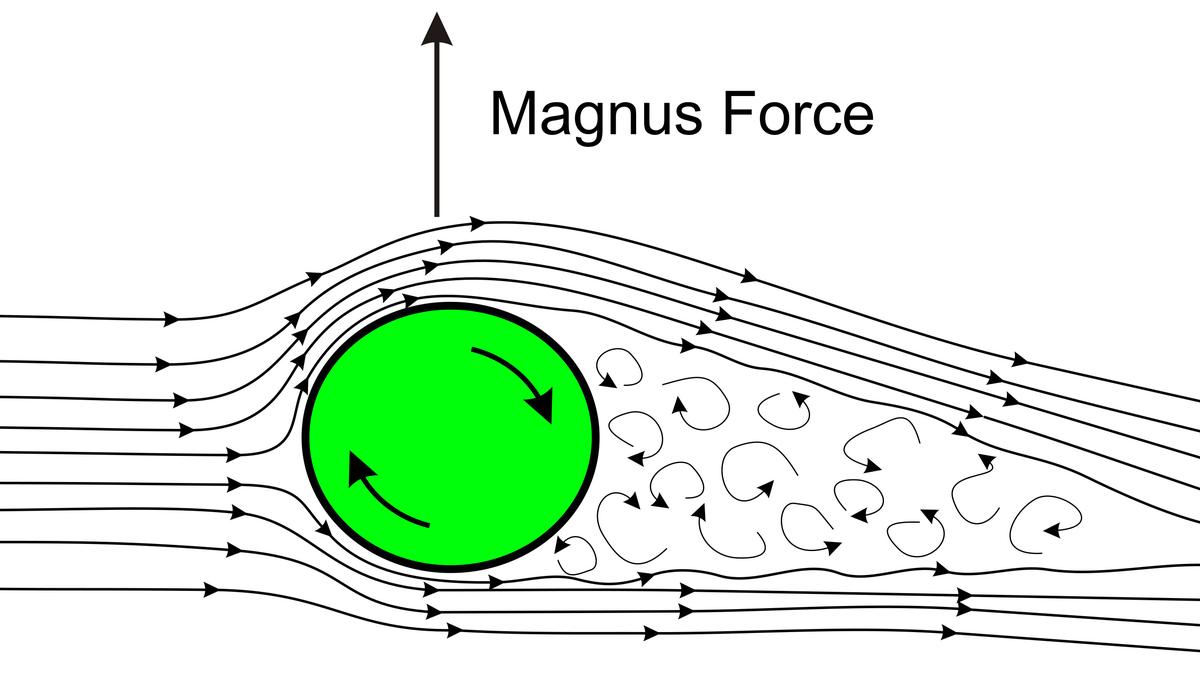Magnus effect diagram
| Photo Credit: WIKIMEDIA COMMONS
Have you ever wondered the secret to Messi’s curved free kick? Or any of our spin bowlers with their masterly bowling? It may look like magic, but it’s actually something physics calls the Magnus effect. From cricket pitches to football stadiums, this phenomenon plays an important role in gameplay – and winning. With that being said, let’s take a dive into the science of spin.
The Magnus effect essentially occurs when a spinning object cuts through fluid or air. The way it works is that when an object spins, it experiences a force perpendicular (at 90 degrees) to its direction of motion. It is named after Heinrich Gustav Magnus, a German physicist who described the effect back in 1852. Other scientists like Sir Isaac Newton have explained this effect before him, however, it was Magnus who got honoured.
Breaking it down
When an object spins through the air, the speed is higher on one side as compared to the other side. This creates a pressure difference as per Bernoulli’s principle (faster-moving air has lower pressure than slower-moving air), leading to a sideways force. This results in the object curving or dipping in its path.
A killer free kick
You may have seen Messi’s winning free kick. This iconic kick can be considered a famous example of how the Magnus effect can be explained.
Messi is usually just a couple steps away from the ball, enough for a brief run-up before he strikes. His right foot is planted beside the ball, giving a base for his left leg to swing. He uses the inside of his foot, aiming slightly below the centre of the ball to create the spin effect. During this, his ankle must be locked in order to ensure a stable transfer of energy.
The side spin causes the ball to curve away from the wall and towards the goal, while the top spin helps it dip under the crossbar. By adjusting the angle of his foot and the point of contact, he can control the spin, allowing him to strike the ball with incredible accuracy and to claim a goal successfully.
Lionel Messi and his free kick.
| Photo Credit:
KAI PFAFFENBACH
A stumping spin
In cricket, a bowler will have to impart the spin using his hand. Now, if we apply the principle, the air on one side will move along the spin, and on the other side will be disrupted, thereby moving away from the ball and upwards. If we apply Newton’s third law of motion, which states every action will have an equal opposite reaction, this leads to a downward force on the ball, thereby leading it to dip sooner than when the ball is delivered normally.
We must always remember that sports and science are a hand-in-glove combination, and the Magnus effect is such a principle that aids a lot of people in sports.
Published – October 07, 2025 06:25 pm IST
